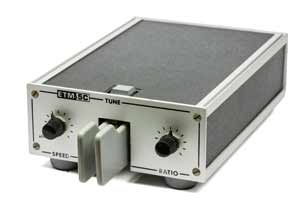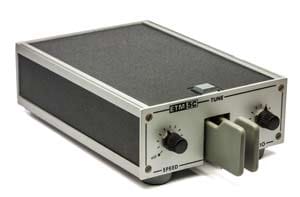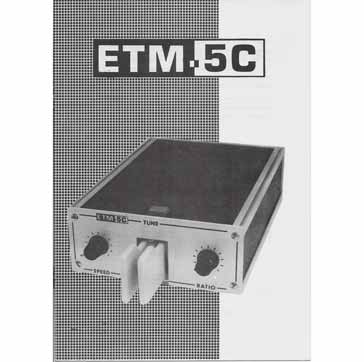ETM 5C Electronic Morse Key / Keyer
The Samson ETM-5C fully automatic iambic electronic Morse key or keyer was introduced in the 1980s and used and well loved by both commercial and radio amateur operators alike.
Morse Telegraph History Includes:
Morse telegraph history
Morse keys development
Vibroplex & mechanical bug keys
Telegraph sounder
Morse inker
Samuel Morse
Fascinating facts
Morse code SOS message
Morse keys:
Clipsal key
Camelback
Walters Electrical Patt 1056A Post Office key
Steel lever Morse telegraph key
RAF Bathtub Morse key
Samson ETM-5C electronic keyer
The ETM-5C was an early fully automatic electronic iambic Morse keyer that was able to produce both dots and dashes automatically.
It was introduced in 1984 and developed by Hermann Samson, DJ2BW in Osburg in Germany. The ETM-5C and was one of a series of Morse keys that were introduced, each one improving on the previous.
Other popular models were the ETM-1 assembly kit introduced in 1967, ETM-2 (1968), ETM-2b 1970, ETM-4M (1974), ETM-4C (1976), ETM-1C (1983), ETM-SQ (1988).

These keys were very poplar in the 1980s, a time when amateur radio transceivers did not include the electronics needed to interface directly with a mechanical iambic or similar paddle.
The series of Samson electroni keys or keyers were not cheap, but they produced high quality product, so much so that they were widely used by government organisations as well as by many ships wireless operators.
ETM-5C description
The first impressions of the key are of a very smart looking unit. The actual enclosure is quite ingenious having four aluminium extrusions that allow the required panel to be removed.
Access to the battery is through the lower panel and this reveals the battery and the printed circuit board. It also gives access to the actual paddle itself.
I was probably a little disappointed that the battery pack was not secured in any way, but it did not seem to move around unduly.

In terms of the external features, the front panel has the paddle itself in the middle - this has an exceptionally good feel to it - comparable with the top paddles available today.
If adjustments need to be made to the gap and the tension, these can easily be done from withint he case with the bottom removed.
The internal circuitry is all the old 4000 series CMOS, and this takes virtually no current at all, and therefore it is possible to leave the key on all the time.
The main point to watch is that the batteries do not leak as they become time-expired rather than empty of charge.
Operation
The control to the left of the paddle provides the speed adjustment and this can be set to between 8 and 50 words a minute.

The right hand adjustment is for the weighting and adjusts the dot dash ratio very slightly to make the Morse characters sound a little more musical and easier to read - in reality it does not make much of a diference, so often it can be left.
On the top of the unit there is a push down button so that the transmitter could be tuned - possibly not much use these days as most modern transceivers have this capability included as an automatic capability.
In terms of keying, it is possible to use the internal reed relay, or where voltage and current levels are low, this can be achieved using an internal transistor. Only positive voltage switching is available for this, but this is fine for most modern transceivers.
The Samson ETM-5C is a really nice piece of kit. It works well, the paddle feels excellent and the overall look is good as well.
In some respects it is a bit dated because most modern transceivers only require a paddle as all the electronics is contained on a single chip or as software. The key also pre-dates the iambic modes A and B, and this is not available on the keyer to my knowledge.
 Written by Ian Poole .
Written by Ian Poole .
Experienced electronics engineer and author.
More History:
Radio history timeline
History of the radio
Ham radio history
Coherer
Crystal radio
Magnetic detector
Spark transmitter
Morse telegraph
Valve / tube history
PN junction diode invention
Transistor
Integrated circuit
Quartz crystals
Classic radios
Mobile telecoms history
Vintage mobile phones
Return to History menu . . .



